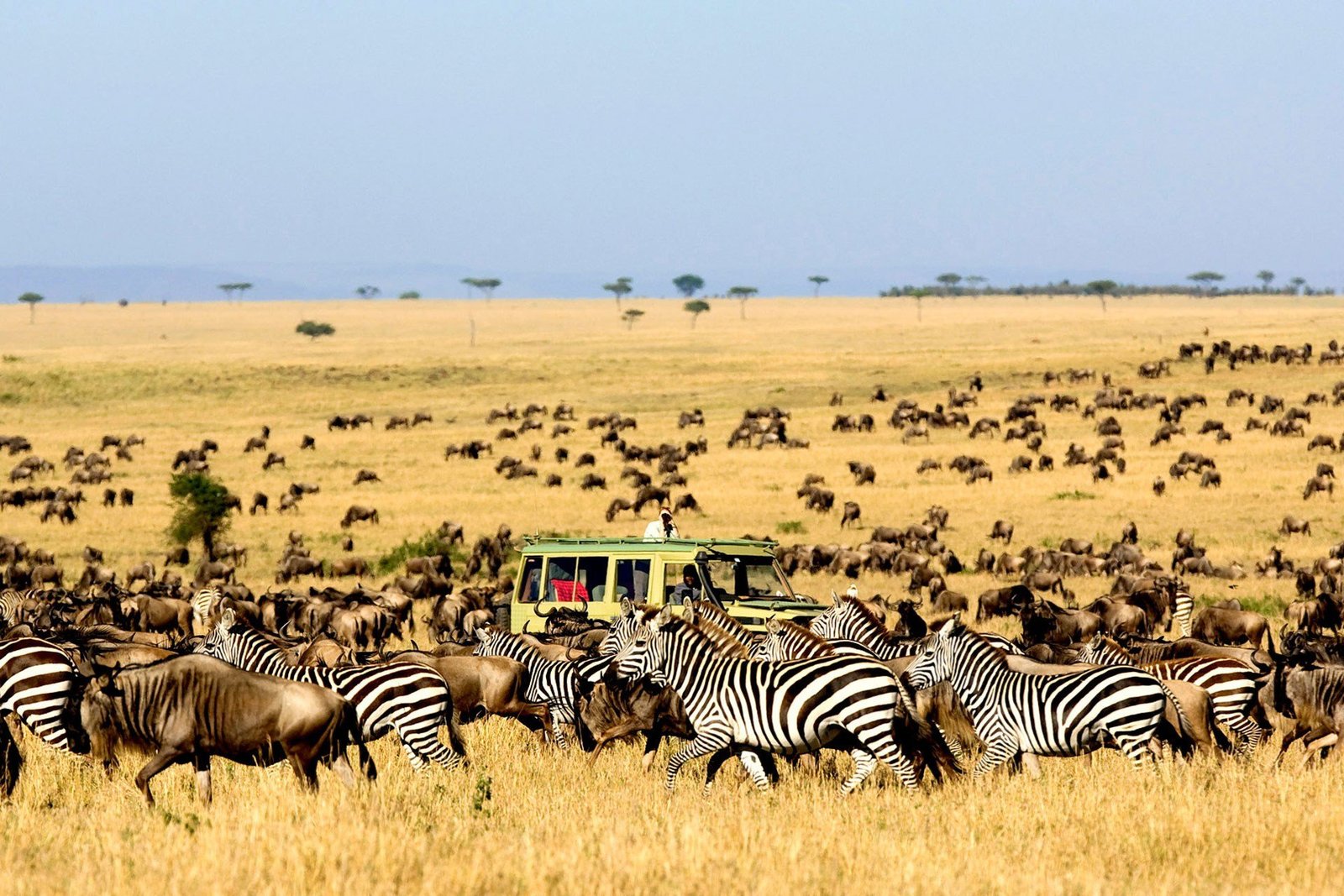Uganda’s Traditional Musical Instruments
Uganda’s Traditional Musical Instruments : The sweet music in our world is something we can never get enough of. Sound communicates a lot, but music explains better. Many times we listen to songs sung in languages we do not even understand but we still stand up to dance and sing along. Music is one of the few intangible things gifted to our world today, which has the capacity to keep us beautifully chained in ecstasy.
Though modernization or invention has tried to change their shape, size, and other traits, these traditional musical instruments still beat the new ones. Whatever mood you are in, these musical instruments will give you the best mood once sounded.
These musical instruments are found in all parts of Uganda. In each tribe, the same musical instrument is given a name as per the language, what it does, or in line with its sound. An instrument may have a similar name in another language through the spelling may differ. Some of these musical instruments can be played solo while others played together. However, the combination of the different instruments produces a thrilling sound that makes Africa be referred to as the home of beautiful Uganda the Pearl of Africa. In today’s write-up, we go disclose to the world the traditional musical gadgets or instruments used to produce the sweet music in Uganda.
Engalabi/ long drum.
 |
|---|
This percussion instrument is a traditional drum with its head made of reptile skin nailed to a wooden sound body. In Buganda, the Engalabi is very important and is used in big ceremonies and during performances in theatres. The saying in Luganda “Tugenda Mungalabi”, means we are going to the Engalabi (long drum) led to the naming of this drum. It is played using bare hands. Instruments, which produce sound through the vibration of a stretched membrane or skin, are called membranophones. Try it while on your Ugandan safari.
Engoma/Drums
In Africa, drums are generally used as far as music production is concerned and it is the force that ignites performance and boosts the rhythm. Since music in the African tradition is not merely about entertainment, it ultimately avails to visual and dramatic arts as well as the larger fabric of life. Drums may be used for “talking” through sending information and signals by imitating speech. Drumming music and dance are often times an accompaniment for any kind of ceremony; birth, marriages, funerals among others. Drums signify Africanism and Africans are very proud of it.
Akogo/Likende/Akadongo/Sansa/Mbira/Akalimba-thumb piano.
 |
 |
|---|
Many different names but the same percussion instrument. Popular names accorded to it include; Kalimba, Sansa, and Mbira. Furthermore, the Baganda call it “Akadongo ka’baluru” or “little instrument of the Alur tribe” from the West Nile region. The Mbuti pygmies in Amba use rattan cane keys and a straight bridge. In Uganda the instrument is usually played solo, perhaps to relieve a traveler’s solitary trek or a caretaker’s long night watch. The instrument accompanies a repertoire of “songs for thought,” or laments, sung by both men and women. There is more to do about it. Recently, Akogo Festival was materialized. This gives you an opportunity to listen to the sound of these musical instruments and fully dance to them. For details about the event and the instrument, contact Jewel Safaris.
Endongo/Entongoli lyre/bowl lyre/harp lute /kora.
 |
|---|
This stringed instrument best represents the Baganda and Basoga. The Baganda people prefer to call it Endongo, played to lead a wedding dance. In eastern Uganda, a similar instrument is called Litungu. The Bagisu use it for the shoulder dance and call it Kamabega. Generally, the harp-lute is the instrument of the griots, or praise-singers, much as the similar kora or Soron is among the people of Guinea, Ivory Coast, Senegal, Gambia, and southern Mali. It is played either solo or to accompany songs of praise. Come taste its sound from the source in Uganda during your Ugandan safari.
Amakondeere/Engombe/Enzambe horn/wooden trumpet/wind instrument.
With an unclear origin, there is a big perception or belief that this instrument was first used by the Bushmen and Hamites. Serving different roles in different cultures, it is a respected sound and coronation instrument in some parts of Uganda for instance in Buganda and Bunyoro. Among the Batooro, Amakondeere is used as a crowning and cultural ceremonies celebrant instrument for kings in their royal palaces. The people in the West Nile region use it to celebrate the new chiefs and in all other great gatherings and occasions. Its melodic sound is exceptionally beautiful.
Adungu/Adeudeu bow harp/arched harp.
 |
 |
|---|
This is an eight-stringed sweet sound developer. These eight strings are attached inside a wooden-built hollow semi-circle resonating chamber with a wooden cover on top. In Teso region, it is called Adungu and the Baganda call it Ennanga. This instrument is used by several tribes like the Alur of Northern Uganda, the Lugbara, and Ondrosi in the northwestern region around the Nile. It is used to accompany epic and lyrical songs but can as well be used as a solo instrument. Visit Uganda and learn how to sound it.
Endingidi/Adigirgi tube fiddle
 |
 |
|---|
One string fiddle is more frequently used in Buganda, Busoga, Ankole, Kigezi, West Nile, and Acholi regions. It consists of a single string, which is attached to a flexible stick and will sometimes have a resonator. Unlike other single-string instruments, it is played with a bow. Want to try it out? Please contact Jewel Safaris to discuss details for an arranged safari.
The Fiddle
The resonator of the early fiddle was made of a gourd-like Kikuyu instrument. The inventor thought the instrument was similar to the children’s ground bow “Sekitulege” and after making one for himself, he played a children’s song on it. The fiddle has become very popular for light music.
Ennanga/Nanga wooden zither.
This string instrument is commonly used by Bakiga and Acholi tribes. It’s believed to have been brought to Uganda by the Hamites. This string instrument is mostly used for story-telling, love songs, praise songs, epics, dirge songs, and humorous songs. African zithers have a boat-shaped soundbox with a fairly long wooden neck, which enters the resonator. This instrument with eight strings that run above a wooden trough is strictly a solo played instrument. Taste its sound while on safari with Jewel Safaris in the Pearl of Africa.
Uganda’s Traditional Musical Instruments : Sekitulege/Berimbeau musical bow
The stringed musical bow is the simplest form of a string instrument. It is famously used among the Baganda, Basoga and in the West Nile region. Baganda call it Sekitulege, Itesots call it Aunene/ground bow. It is imagined to have been invented from the hunting bow made to shoot arrows. It is the mother of all string instruments, or at least of the harp, and it dates back to very early times. Uganda has it too. You can spend a portion of your time listening to its sound during your Uganda Safari.
Uganda’s Traditional Musical Instruments : Endere/flute/Alumaru
The Baganda call it Endere, the Banyankole and Bakiga know it as Omukuri while the Basoga call it Akalere. The Itesots call it Alumaru. In its usage and sound production, it is the same in all the cultures listed above. It varies in size; the largest flute (kiwuwa), the second-largest (enkoloozi), and the third-largest (entengezi). The smallest is called “entengo”. In the Busoga region, it is a dominant instrument played in combination with other wind or percussion instruments. The Iteso uses the flute mostly solo or accompany it with an Akogo (thumb piano). Is it worth trying to play? Then let Jewel Safaris help you to realize your dream today.
Enkwanzi/panpipe
 |
 |
|---|
This wind instrument comes mostly from the Busoga region. It is made from elephant grass or bamboo. They are stopped flutes, meaning that the node of the plant stops the hollow tube and thus determines the pitch of the pipe. The tubes are arranged from the lowest to the highest and laced together with string. The open rim at the top of each tube is cut at a right angle to the tube so that the player may blow across the top, like blowing across a bottle. This panpipe has at least five pipes. The melodic possibilities of the panpipe and other sets of flutes perhaps influenced the development of flutes with finger holes. Awesome art from the makers that assist in making an authentic uncontaminated work complete.
Uganda’s Traditional Musical Instruments : Agwara side-blown horn.
 |
 |
|---|
This wind instrument is commonly used by the Lugbara and Kebu tribes of the West Nile region. The people (laying it must be in a group of seven or more to deliver a great sound). These side-blown horns sometimes have a single finger hole, which is used for grace-note ornaments. The same kind of instrument amongst the Itesots and the Karimojong are made of cow horns and have only one mouthpiece; they are only used for communicating or giving signals. Instruments, which produce sound through a vibrating column of air are called aerophones. Horns are a type of “brass” or buzzed-lip instruments. Seen one before? It’s time to dance to its sound.
Akadinda/Embaire/Entaara/Amadinda/xylophone.
 |
 |
|---|
This percussion instrument is dominant and widely used by the Bantu-speaking people. Known to each tribe by the name used in the particular culture, they are best for completing the sound. The instrument is made up of several keys separated by either long sticks or short ones and is placed on banana stems. They are used by the Baganda, Itesots, Bagisu, Basoga, and Bakonzo. The keys are tied in place by threading a string through small holes in the wood. The Amadinda has two “shoulders” carved on the bottom so that the keys, which are not otherwise fixed, will not move when placed on the banana stems. Welcome to Uganda with Jewel Safaris. The home of authentic African and Ugandan sound. Don’t miss out on it while on your Uganda or African safari.
Uganda’s Traditional Musical Instruments : Ensaasi/Enseege shakers.
 |
 |
|---|
This is a percussion instrument made in pairs from gourds or shells with stick handles. These are generally used as an accompanying traditional music instrument in Uganda. The Central and Northern regions have shakers that produce a continuous sound as beads move from side to side in the body in which they are sealed.
Other percussion instruments include:
- the Akacence/shakers
- Endege/Ankle bells.
Dancers frequently have metal jingles tied on their ankles to articulate their movements.
- Agwata-percussion gourds.
The authentic sound is incomparable. The best-imported dance strokes to perform to the unmatched sound from these instruments. The players are expertise, the community so welcoming and freely ready to train you, the excitement at its peak, and the tourists willing to dance. Are you a good dancer and would like to try dancing to the sound of the African rhythm? Well, you are welcome to Uganda the home of the real African sound. Get in touch with Jewel Safaris for more and make arrangements for this as part of your safari.
Uganda Safari Packages
1 Day Jinja City Tour & White Water
1 Day Kampala City tour Uganda
3 Days Sipi Falls Hike Tour Uganda
2 Days Queen Elizabeth Park Safari
3 Days Murchison Falls Safari Uganda




